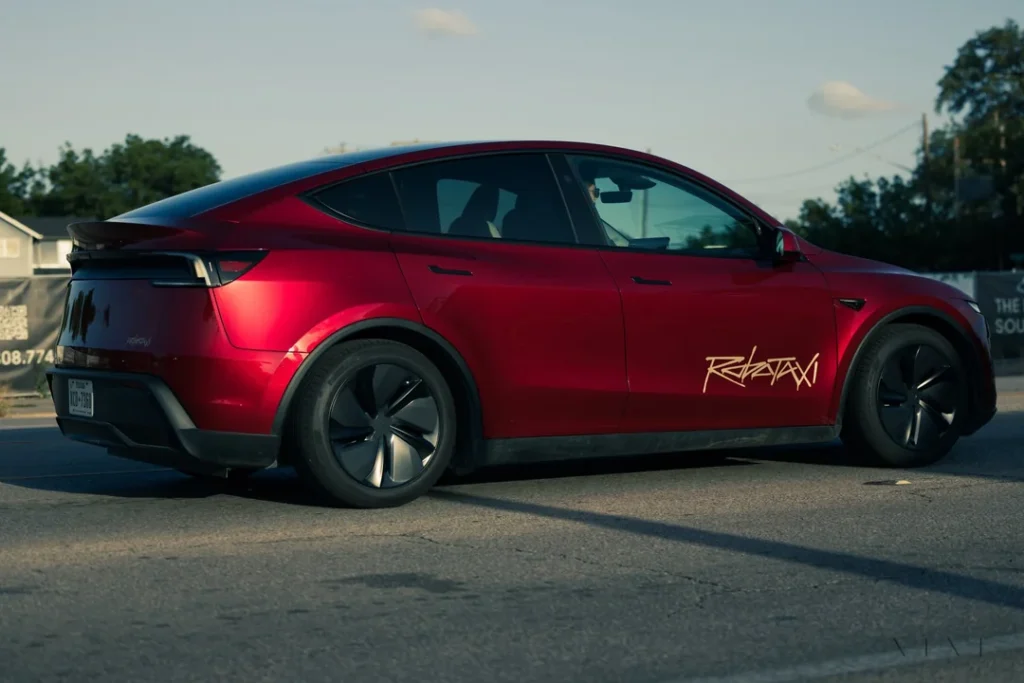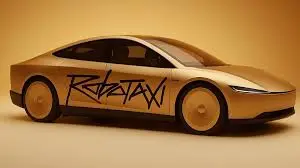
In a tech-driven world where innovation often races ahead of regulation, few developments have captured the public’s imagination like the rise of the robotaxi. And no company has stoked more anticipation in this space than Tesla, whose much-discussed Tesla robotaxi network promises to reshape urban transportation, redefine car ownership, and disrupt the global taxi industry as we know it.
But where exactly are we in the timeline of this future-forward vision? Are Tesla robotaxis ready to hit the road—or are we still cruising through Elon Musk’s ambitious roadmap?
Let’s break it down.
What Is a Robotaxi?
A robotaxi, short for “robotic taxi,” is a fully autonomous vehicle that offers ride-hailing services without a human driver. Equipped with advanced sensors, AI-driven decision-making, and GPS navigation, robotaxis are built to function independently—picking up passengers, navigating traffic, and reaching destinations without manual intervention.
Companies like Waymo, Cruise, and Tesla are investing billions into this technology, viewing it as the next frontier in sustainable, efficient, and profitable urban mobility.
Tesla Robotaxi: Elon Musk’s Bold Vision
When Elon Musk speaks about the future, people listen—whether they agree or not. At Tesla’s 2019 Autonomy Day, Musk revealed plans to launch a fleet of Tesla robotaxis by as early as 2020, using Tesla’s existing vehicles and its Full Self-Driving (FSD) software.
“You’ll be able to summon your car from across the country,” Musk proclaimed. “You can add your car to the Tesla Network and earn money while you’re not using it—like Airbnb for your car.”
While the original timeline has clearly shifted, the Tesla robotaxi concept remains central to the company’s long-term strategy. Tesla isn’t just developing autonomous cars—it’s building a decentralized ride-hailing ecosystem that could, in theory, rival Uber and Lyft while paying Tesla owners for vehicle sharing.
2024 Update: Are Tesla Robotaxis Here Yet?
As of mid-2024, Tesla robotaxis are not yet operating as fully autonomous taxis. Tesla has made significant advances in its Full Self-Driving (FSD) Beta program, but despite impressive demonstrations, the software still requires driver supervision and intervention in many real-world scenarios.
Musk, however, has once again reignited excitement. During Tesla’s Q1 earnings call this year, he confirmed that the company would officially unveil its purpose-built robotaxi vehicle on August 8, 2024. Unlike Tesla’s current lineup—Model S, 3, X, and Y—this new vehicle will reportedly have no steering wheel or pedals and be designed exclusively for autonomous ride-hailing.
“We’re building a robotaxi that will be safer than human drivers, cheaper than public transit, and fully electric,” Musk told investors.
Tesla Robotaxis vs. The Competition
While Tesla continues to generate buzz, it faces stiff competition. Waymo, owned by Alphabet (Google’s parent company), already operates a commercial robotaxi service in Phoenix, Arizona. General Motors’ Cruise is also testing its driverless fleet in San Francisco and Austin.
So, what gives Tesla the edge?
- Vertical Integration: Tesla builds its own hardware and software, giving it greater control over performance and safety.
- Data Scale: With millions of Tesla vehicles on the road, the company collects real-world driving data on an unprecedented scale.
- Brand Loyalty: Tesla’s brand power ensures massive media attention and consumer interest.
Still, critics argue that Tesla’s reliance on a camera-only system (no LiDAR) puts it at a disadvantage in complex environments.
The Regulatory Roadblock
While technology is rapidly advancing, robotaxis face significant regulatory hurdles. In the U.S., autonomous vehicle laws vary by state, and federal guidelines remain vague. California, home to Tesla’s original HQ, has been especially cautious, requiring detailed reporting on autonomous disengagements and passenger safety.
That’s a major reason why Tesla robotaxis are still in beta mode, not yet authorized for public ride-hailing.
“We’re not just dealing with technical issues—we’re dealing with public trust, liability, and city-level infrastructure concerns,” said John Lee, a transportation analyst at the Brookings Institution.
Will Tesla Owners Share Their Cars?
One of the most radical parts of Musk’s Tesla robotaxi vision is the idea that Tesla owners could enroll their vehicles into a shared fleet while not using them. In this scenario, your Model 3 could earn you passive income while you’re at work or sleeping.
But will consumers be willing to share their cars?
Surveys suggest mixed feelings. Some early adopters are excited by the potential for income generation, while others are wary of wear-and-tear, liability issues, and the loss of personal control.
Nonetheless, Tesla is expected to offer financial incentives and even a dedicated app platform (like Uber) to facilitate this network.
Economic and Environmental Impact
If Tesla robotaxis become reality, the economic ripple effects could be enormous:
- Lower transportation costs for consumers
- Reduced demand for private vehicle ownership, especially in cities
- Disruption to the taxi, rideshare, and insurance industries
- Reduced carbon emissions thanks to Tesla’s all-electric fleet
Musk has even claimed that Tesla robotaxis could offer rides for less than $0.20 per mile—cheaper than most public transit fares today.
The Dark Side: Safety, Job Losses, and AI Risk
Despite the promise, critics warn of potential downsides:
- Job displacement for millions of human drivers
- Overreliance on software in life-or-death situations
- Cybersecurity threats from networked vehicles
- Privacy concerns regarding passenger data collection
Tesla insists its vehicles will be far safer than human-driven cars, citing its FSD safety report. Still, widespread trust will take time—and likely, a spotless safety record.
What’s Next?
As the August 8 robotaxi reveal approaches, excitement is building once again. Tesla is expected to showcase its dedicated robotaxi vehicle, outline commercial plans, and offer new insights into the long-awaited Tesla Network.
In the meantime, the company continues to roll out FSD updates, expand its charging infrastructure, and court regulators in markets like Texas and Florida—states known for their openness to AV testing.
Final Thoughts
The age of the robotaxi is fast approaching. Whether Tesla robotaxis dominate the market or simply become one player among many, the future of mobility is about to shift in a big way.
As Elon Musk loves to say, “The future is coming fast—and it doesn’t have a steering wheel.”


1 thought on “Tesla Robotaxi Revolution: Are We on the Brink of a Driverless Future?”